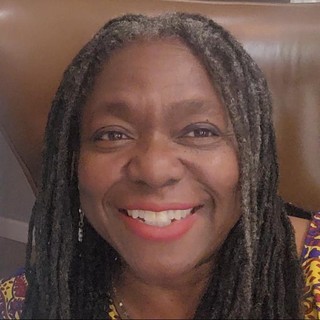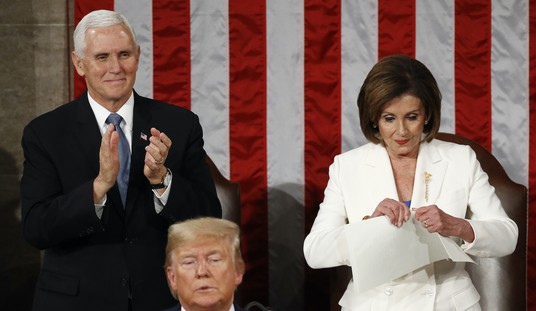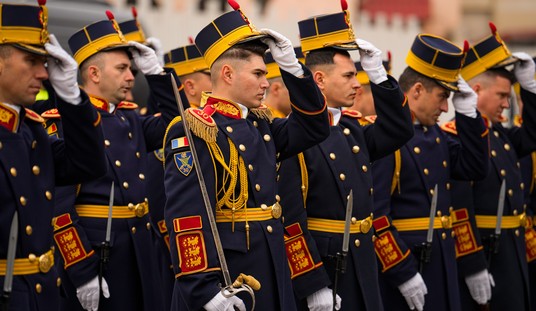We've seen our share of January 6th documentaries, many of them well done and informative, as well as infuriating.
Tucker Carlson produced his "Patriot Purge" series when he was still with Fox News, and RedState interviewed actor/director Nick Searcy about his film Capitol Punishment which highlighted the fostered narratives versus what actually occurred.
After parting ways with Fox News, Lara Logan decided to take her investigative expertise and apply it to the individuals caught up in the madness of that day. The result is a docuseries called The Rest of The Story. (View the preview below.)
Logan uses the riot footage and the escalating events of that day as a backdrop and brings into focus the innocent people adversely affected.
We have heard ad infinitum about the attempts to "overthrow democracy," and the tortuous tales of supposedly terrorized lawmakers but less about the victims left in the wake of an event that is still under scrutiny and investigation. Not only Ashli Babbitt but also Rosanne Boyland, Matthew Perna, Victoria Wright, and others.
I sat down with Logan, and she explained how she started down this path and where the journey led her.
WATCH:
If you tune into any legacy news channel (and even Fox News), there is a preferred narrative on January 6. That it was an insurrection to overthrow democracy. That police were brutally attacked, and some lost their lives. That Trump incited his supporters to riot. Logan dismisses the well-crafted narratives and surmises that the "spontaneous events" may well have been coordinated efforts by forces who chose to leave even the Capitol Police in the dark.
So there's no question that the chaos and the spontaneous events that occurred were engineered. I mean, when I say there's no question, it's so obvious as you look at January 6. I mean, the first and most obvious thing is that Trump supporters Back the Blue, okay. So, the vast majority of people did not go there that day to fight with the police.
WATCH:
Logan also wanted to flesh out the one-dimensional images presented by the legacy media of Perna and Boyland and the manners in which they died. Like the false narrative about when and how Capitol Police Officer Brian Sicknick died, the portrait painted of Rosanne Boyland was unsupported and ultimately cruel.
When they see this series, some of the things that you're going to learn are very simple. Like who was Roseanne Boyland? You know? Who was this woman that they said died of an overdose? Now people may or may not know that they said that. They may. or may not know that it wasn't true; but what they're going to learn from us is here is a woman who they are saying died of an overdose is one of the cruelest, most evil things you could do, because this woman fought and beat addiction. She was strong enough and brave enough to fight that, and walk that path and take on that fight and win.
To choose to lie about Rosanne Boyland in that way is to stick a knife in the heart of everybody who loved her and knew her, and walked that journey with her. And so, it really is some insight into how nasty these people are, who create these false narratives and how little regard they have for the damage that they do.
Then there is the tragic tale of Victoria Wright, who was beaten by Capitol Police simply for trying to protect herself from harm.
Everybody in this country should know her name, because that woman was beaten over, and over, and over again. She had blood pouring down her face. Pouring down her face. Two police officers beat her. She was beaten with batons and then she was beaten with fists. Okay?! And this is on camera. It is on camera, and that woman just pleaded guilty because she was so afraid, because she's so poor, because she is so defenseless. And all she did was hold her hands up like this [Logan holds her hands to her face]. She held her hands up to protect herself from the beatings that she was getting, and we will explain to you when we get into the series why she didn't fight for herself, and it will break your heart.
While the docuseries rightly focuses on these wronged individuals, I was curious about whether there would be any airing of fresh facts or new discoveries concerning the timeline of events that occurred.
I think there are things that we have learned and that we understand better now, that a lot of people didn't know. I think there are some very simple things that people don't know and understand, not because they're explosive, right? There's not because it's the smoking gun. That's what everybody wants. There's no smoking gun, but there are things that people didn't know and didn't understand that when you put them in their proper context, you can see the truth. And so, those things are very significant, and I want to leave it up to people to make up their own minds.
Then there is the established narrative among Trump supporters and certain right-of-center media that the purpose behind January 6 was to destroy Donald J. Trump and ensure that he could never attain high office again. Logan sees this as a smaller part of a greater goal: to silence and intimidate Americans.
They need to tell more, and more, and more lies to prop up their false narrative, right? And they can't have it if people are questioning, and people feel free to question, and judges think, well, I'm the judge, and they're only accountable to those pushing the lie because the people are silent. I remember at the time having conversations [like] the only thing that can force these judges now to not be cowards and to not be dishonest is when they know that people are watching and people are going to hold them accountable. Well, how do people hold them accountable? One way is they pour out onto the street.
WATCH:
Ultimately, Logan is simply doing the work of a journalist: giving the American people truth, facts, and the fullest information possible so that they can make up their own minds, speak up for what they believe, hold the people who need correction accountable, and stand their ground in the face of intimidation and targeting.
So I want to be very clear with people: I'm a journalist. It's not my job to tell you what to do. I know a lot of journalists do, but that's not my job, right? I'm not an opinion person. I don't, you know, I don't host a show like you do. I go out, and do what I do. I'm a worker bee. [...]
And so, I would say you should be able to figure it out. You should be able to figure out what is important to you, what you think matters, and you should be able to fight for that. And it's pretty obvious that the first thing you have to do is speak up, because if you won't have honest conversations at the dinner table at home, if you go to family gatherings and you just silence yourself, you dread going because you don't want to talk. If you're so afraid of confrontation and conflict, then you are allowing yourself to be part of the problem. In a normal world we can disagree and still be friends. Maybe we disagree so fundamentally that we don't really want to be friends anymore. That's different. But you know, we should be able to have these conversations and still love each other.
WATCH:
The first episode of The Rest of the Story, "Matthew Perna, Part 1," dropped on Thursday. You can view it on X (formerly Twitter) on Lara Logan's account or through Truth In Media (below).
The preview of the series can be viewed here:














